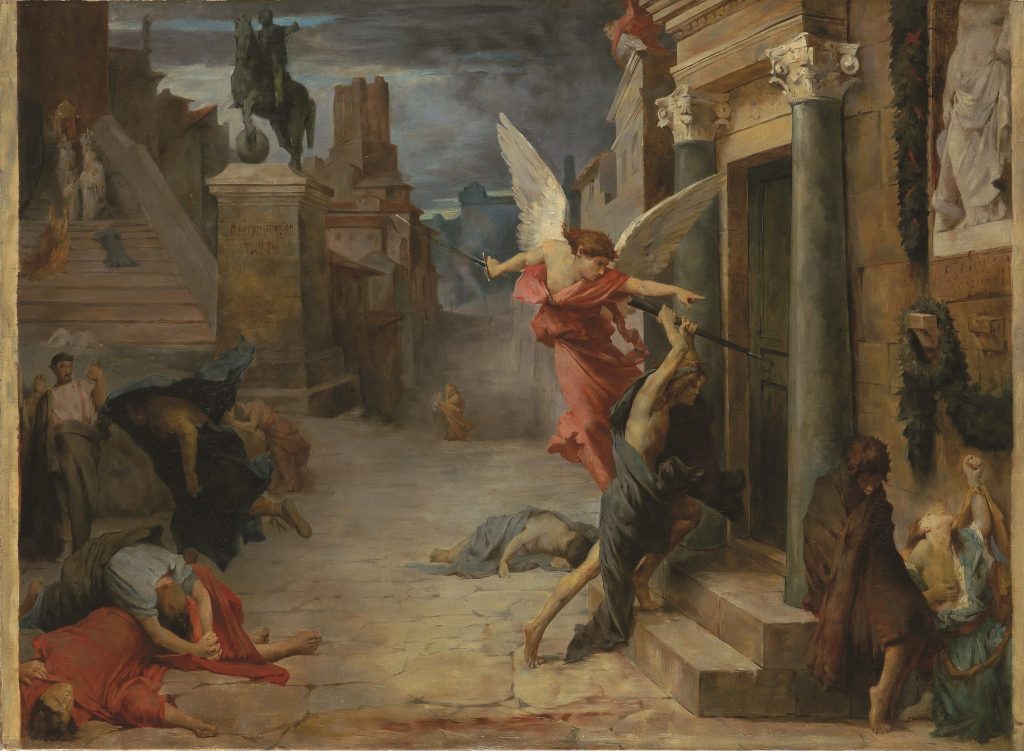The Antonine Plague
Tracey J. Kinney
Looking Back from the 19th Century
Jules Elie Delauney (1828-1891) is recognized as one of the foremost French neoclassical painters of the 19th Century. Delauney, who studied at the École des Beaux-Arts in Paris, depicts mythological and historical themes, often in combination. “La Peste à Rome”, featured here, includes an equestrian statue that is believed to be Marcus Aurelius; however, the plinth reads “Constantine”. The statue on the right-hand side of the painting is Aesculapius, the Roman god of medicine. Delauney is said to have been inspired by a passage from the Dominican Jacobus de Voragine’s Legenda Aurea (Golden Legend, ~1292), which reads, “And then there appeared a good angel, who commanded a bad angel, armed with a pike, to strike the houses and each house had as many dead as the number of blows on the door.” The work is currently on display at the Musée d’Orsay in Paris. The exhibit notes observe that this was one of the most acclaimed works at the 1869 Salon, where it was first exhibited.

Questions for Consideration
- How does the depiction of plague compare to that of the previous painting?
- Do contemporary (that is, 19th Century) concerns influence Delauney’s painting in any way?
- Why would the author include the ‘Constantine plinth’?
Media Attributions
- La peste a Rome © Jules Elie Delaunay is licensed under a Public Domain license

